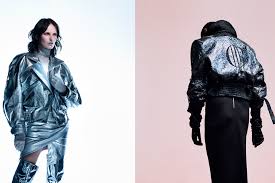Introduction: The Shift Towards Sustainability
As we enter 2024, the fashion industry is undergoing a significant transformation, driven by an increasing awareness of environmental issues and the urgent need for sustainable practices. Eco-friendly brands are not only changing how clothing is produced but are also reshaping consumer attitudes towards fashion. This article explores the trends in sustainable fashion and highlights how innovative brands are leading the way.
1. Innovative Materials and Production Processes
In 2024, sustainable fashion brands are prioritizing innovative materials that reduce environmental impact. These include organic cotton, hemp, and recycled fabrics, which minimize resource use and waste. For example, brands like Reformation and Patagonia are utilizing recycled polyester derived from plastic bottles, turning waste into stylish clothing. This approach not only reduces the need for new materials but also helps combat the growing plastic pollution crisis.
Additionally, advancements in production processes are gaining traction. Brands are adopting technologies such as 3D knitting and on-demand manufacturing, which significantly cut down on overproduction and waste. These methods allow for more efficient use of resources, aligning with the principles of a circular economy. By creating only what is needed and using sustainable materials, eco-friendly brands are setting a new standard in the fashion industry.
2. Transparency and Ethical Practices
Another hallmark of sustainable fashion in 2024 is the emphasis on transparency and ethical practices. Consumers are increasingly seeking brands that prioritize ethical labor practices and environmental stewardship. Many eco-friendly brands are openly sharing their supply chain information, detailing where and how their products are made. This transparency builds trust with consumers who want to support companies that align with their values.
Brands like Everlane and Eileen Fisher are leading the charge by committing to fair labor practices and sustainable sourcing. By ensuring fair wages and safe working conditions, these companies demonstrate that fashion can be both ethical and stylish. This trend is not just a passing phase; it is becoming a fundamental expectation among consumers.
3. The Role of Consumer Awareness and Education
Consumer awareness is driving the shift towards sustainable fashion in 2024. As more individuals recognize the environmental and social impacts of fast fashion, they are demanding more sustainable options. Brands are responding by not only offering eco-friendly products but also educating consumers about the importance of sustainability in fashion.
Initiatives such as clothing swaps, repair workshops, and educational campaigns are becoming commonplace. These efforts encourage consumers to rethink their purchasing habits and consider the lifecycle of their clothing. As sustainability becomes a core value for many, it’s clear that eco-friendly brands are not just following trends—they are setting them.
Conclusion: A Sustainable Future for Fashion
As we navigate through 2024, the sustainable fashion movement is gaining momentum, with eco-friendly brands leading the charge. By prioritizing innovative materials, transparency, and consumer education, these brands are redefining what it means to be fashionable in today’s world. As awareness grows and consumer demand shifts, the future of fashion looks brighter and more sustainable than ever.

